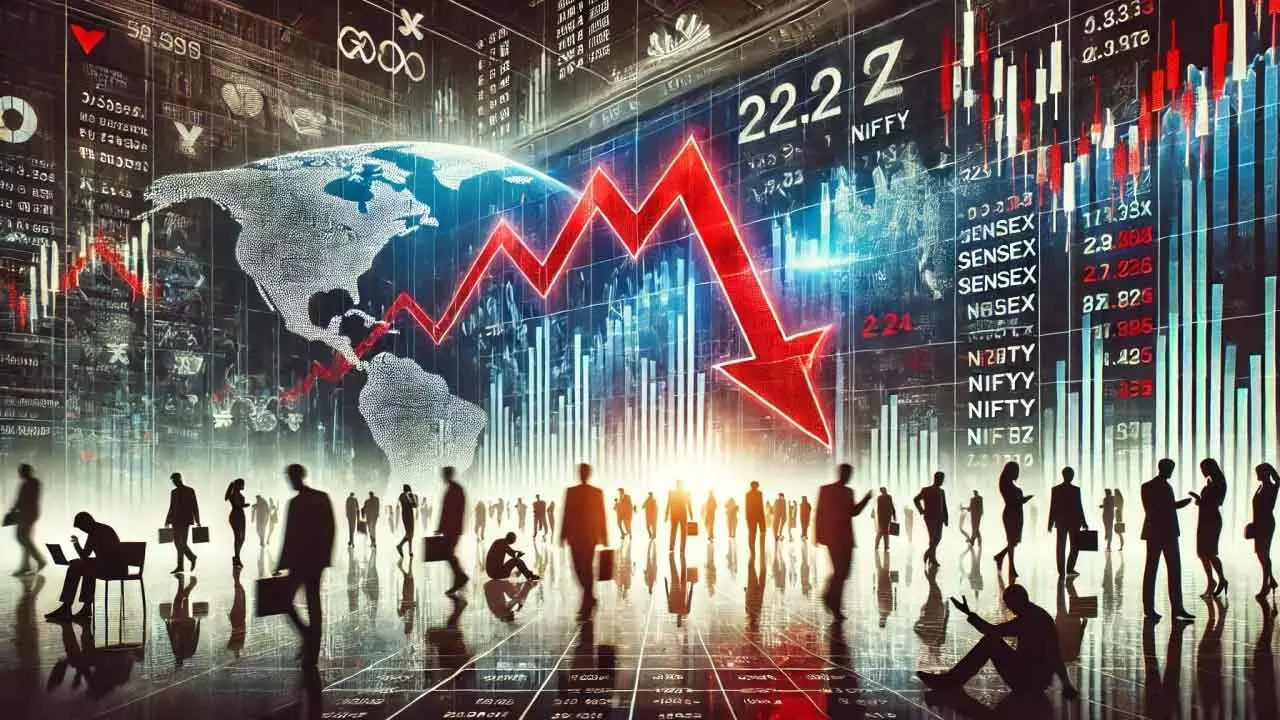Low Demand Proving To Be A Deterrent For Private Investment
Investments by listed players moderated, while those by unlisted entities contracted: Icra data
Low Demand Proving To Be A Deterrent For Private Investment

Availability of bank credit isn't a constraint any longer, and regulation has eased with regulatory restrictions halving between 2003 and 2020. However, none of this has prodded corporate India to boost spending
India has attained much economic success in the past three decades. Yet an economic deceleration in recent years has generated worried commentaries about the country’s growth outlook.
After a long hiatus, the investment rate picked up slightly in 2022 and 2023, but latest data from a leading ratings agency shows that private sector expenditure as part of the overall investments in India's economy dipped to a decadal low of 33 per cent this financial year.
Analysis from Icra of 4,500 listed companies and 8,000 unlisted companies reveals that while the pace of investments made by listed players moderated, those by unlisted entities actually contracted.
Data from investment advisory firm Value Research shows that Indian non-financial businesses were sitting on cash worth 11 per cent of their total assets, corroborating the view that companies are not spending money in making fresh investments.
Weak domestic consumption in urban areas, muted export demand and an influx of cheap Chinese imports in some sectors were among the factors that "restricted the capacity expansion plans of Indian corporate houses", Icra's chief rating officer K. Ravichandran said in a note.
But beyond the more immediate reasons, private investment impulse has been low because of "global uncertainties and overcapacity", the economic survey had pointed out earlier this year.
Investments are the second largest contributor to India's GDP following private consumption. Slowing private investments have a direct bearing on India's growth prospects.
Investments by companies in assets such as factories, machinery or construction – also called gross fixed capital formation – make up around 30 per cent of GDP and are its second largest contributors following private consumption.
Attaining a growth rate of eight per cent or higher on a sustained basis will likely require contributions from all domestic sectors and support from the global economy. It will require a concerted reform and policy momentum, wide enough in scope that succeeds in reversing the slowdown in investment, credit supply, and exports.
Maintaining the hard-won macroeconomic stability, a definite and durable solution to the banking sector issues, realisation of the expected growth and fiscal dividend from the GST are other key components of attaining a growth rate of right per cent or higher.
India's full-year GDP is expected to close at 6.5 per cent, sharply lower compared to last year's 9.2 per cenrt. Growth has flagged on account of slower consumption.
With all the key levers of growth, including exports, slowing down and US President Donald Trump's tariffs exacerbating global uncertainties, kick-starting private investment will be fundamental for India to hit its long-term growth targets, opine many experts.
According to the World Bank's latest estimates, India will need to grow by 7.8 per cent on average over the next 22 years to achieve its high-income status ambition by 2047.
The key to this would be to increase private and public investment to at least 40 per cent of GDP from the current 33 per cent, as per the bank’s estimates.
The government on its part has significantly increased spending, especially on infrastructure. It also cut corporate tax rates from 30 per cent to 22 per cent and doled out billions of dollars in production-linked subsidies to manufacturers over the years. Availability of bank credit isn't a constraint any longer, and regulation has eased with regulatory restrictions halving between 2003 and 2020. However, none of this has prodded corporate India to boost spending.
India's post-pandemic recovery has been uneven, with the consumer class not expanding quickly enough. Demand for goods and services has thus been hit, with spending capacity further curtailed by a fall in wages, even though corporate profitability has soared to a 15-year high this year.
"Just because companies are financially strong doesn't mean they will automatically invest. Companies will only invest if they expect good returns," Chinoy had said earlier this year.
Interest rate cuts as well as a $12 bn income tax relief provided to individuals in the federal budget "augurs well for supporting domestic consumption demand", according to the report.
The Reserve Bank of India (RBI) also says that more private companies have shown an intention to invest this year compared to last year, although how much of that intent results into actual money deployment remains to be seen.
The uncertainties related to global trade tariffs could delay any anticipated investment pick-up, according to Icra.
Although the pace of growth acceleration has differed across sectors, India’s growth pattern has been broadly diversified. The pace of acceleration has been fastest in services, followed by industry, and there has been no evident pattern of acceleration in agriculture.
The most remarkable achievement in agriculture has been the greater stability of growth, but not necessarily a higher average growth rate.
Consistent with the experience of other countries, the contribution of agriculture and allied activities in GDP growth has declined, while that of the non-agricultural sectors has increased.

